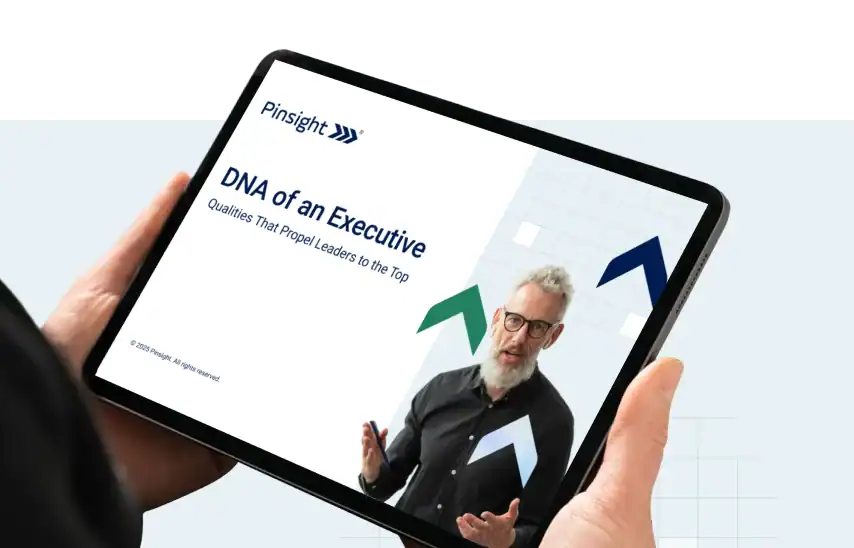In fact, McKinsey & Company (2021) reports that 70% of transformations fail — mostly due to poor execution and leadership misalignment. These breakdowns don’t appear as HR problems. They show up in the numbers: Margin erosion. Rising turnover. Fading operational discipline.
The issue is rarely the plan. It’s the leaders executing it.
Why Traditional Leadership Assessments Fall Short
Despite the growing complexity of post-close execution, many firms continue to rely on low-validity methods for assessing leadership potential:
- Unstructured interviews
- Resume-based pattern recognition
- Informal references from shared networks
Decades of industrial-organizational psychology research suggest these methods are ineffective. Schmidt & Hunter (1998) found that:
- Unstructured interviews predict job success with just 14% validity
- Reference checks have little to no predictive accuracy
This means that most traditional leadership evaluation techniques are statistically no better than chance—yet they remain common in PE-backed manufacturing environments.
How Leadership Risk Manifests in Mid-Market Industrial Companies
Leadership misalignment doesn’t show up in board decks—it shows up on the plant floor. Common early signals include:
- Continuous Improvement initiatives that lose momentum
- Site-level resistance to Lean or ERP adoption
- First-line managers promoted based on technical skills, not leadership ability
- Degrading culture or productivity at specific locations
Gartner found that over 50% of internal promotions for “high-potentials” fail within 18 months — most often because the leader wasn’t ready for the scope, complexity, or ambiguity of the role.
In industrial settings, that failure rate is even more pronounced. Why? Because technical skill is still treated as a stand-in for leadership. But running a line or hitting uptime targets isn’t the same as leading people through change. And that gap becomes painfully clear under pressure.
A Better Approach: Simulation-Based Leadership Assessment
To proactively manage leadership risk, leading firms like MiddleGround Capital are turning to simulation-based assessments. These tools recreate high-pressure, role-relevant business scenarios that elicit observable behavior—providing a more objective and valid read of a leader’s actual capability. Read the full case study here.
Key dimensions assessed include:
- Navigating competing priorities
- Leading through change and uncertainty
- Resolving conflict and team dynamics
- Providing feedback and coaching
Unlike interviews or self-report surveys, simulations allow for direct observation of how individuals think, respond, and lead in context. Even industry leaders, like Hogan Assessments, have identified simulation-based assessment as one of the most predictive methods of future leadership performance in complex roles.
Pinsight data supports this as well:
- Assessed leaders are 4x more likely to be top performers and 3x more likely to scale with the company’s growth.
- A client organization showed 13% increase in quality of leadership hires after 6 months of implementing Pinsight.
- A middle-market PE firm experienced 26% increase in retention in leadership roles after deploying Pinsight (read the full MiddleGround Capital case study).
Leadership Risk Across the PE Lifecycle
| PE Stage | Risk Exposure |
| Post-Close | Misalignment delays execution of 100-day plans and early wins |
| Mid-VCP | Lean and CI initiatives stall due to weak leadership at execution layers |
| Pre-Exit | Gaps in promotable talent reduce scalability and make exits harder to underwrite |
Leadership misalignment is not a late-stage diligence concern—it’s a risk that starts at close and compounds over time.
Mitigating Risk with Pinsight
Pinsight delivers fast, scalable simulation-based assessments designed specifically for the industrial middle market. Unlike legacy tools that focus on C-suite or take weeks to implement, Pinsight aligns with the velocity and complexity of PE-backed execution.
Key advantages include:
- Operational Relevance: Scenarios tied to Lean, CI, ERP, and growth strategies
- Speed to Insight: Results available within 24 hours
- Scalability: Easily deployed across multiple sites and leadership layers
- Business-Aligned Reporting: Outputs translate into KPI-relevant language for operators, not just HR
By identifying high-potential leaders early—and surfacing hidden risk—Pinsight equips you to deploy, coach, and reassign talent before execution falters. Read the full ROI analysis of better leadership decisions.







